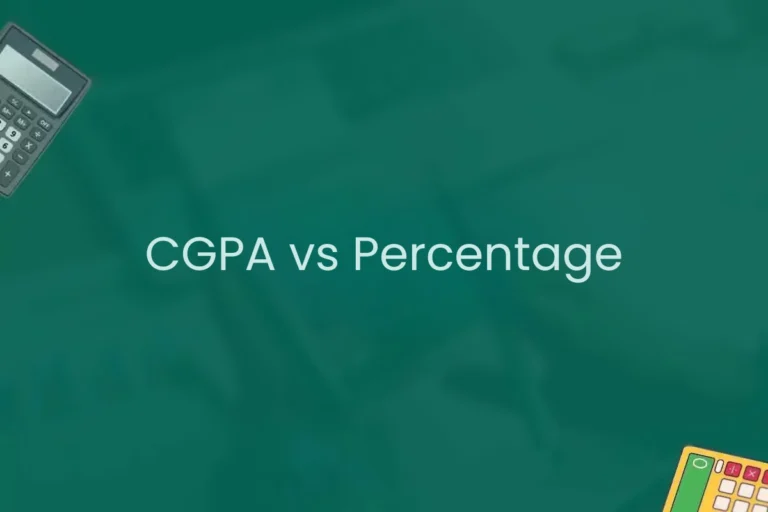CGPA vs. OGPA vs. SGPA vs. GPA: Understanding the Key Differences

In academic institutions worldwide, grading systems play a crucial role in assessing student performance. Terms like CGPA, OGPA, SGPA, and GPA often cause confusion among students. This article clarifies these terms, explains their significance, and helps students understand how each grading system works.
Most Use Calculator
Understanding the Grading Systems
1. GPA (Grade Point Average)
Definition: GPA is a numerical representation of a student’s academic performance in a given term or semester. It is calculated based on individual course grades and credit hours.
Formula:
Significance:
- Used in universities in the USA, Canada, and some Asian countries.
- Affects scholarship eligibility and job opportunities.
2. SGPA (Semester Grade Point Average)
Definition: SGPA represents the average grade points obtained in a specific semester. It is similar to GPA but applies to a single academic term.
Calculation:
- SGPA is calculated by taking the weighted average of grade points achieved in all courses within a semester.
- At the end of multiple semesters, SGPA contributes to the final CGPA.
3. CGPA (Cumulative Grade Point Average)
Definition: CGPA is the overall academic performance across multiple semesters.
Formula:
Significance:
- Represents the student’s complete academic performance.
- Used for university admissions, job applications, and scholarships.
- Common in Indian and European universities.
Conversion: For those needing to convert their CGPA to Percentage, many universities provide standard conversion formulas.
4. OGPA (Overall Grade Point Average)
Definition: OGPA is similar to CGPA but is often used in agricultural and technical universities.
Differences Between CGPA and OGPA:
| Feature | CGPA | OGPA |
|---|---|---|
| Usage | General universities | Agricultural & technical universities |
| Calculation | Based on all semesters | Includes practical & fieldwork |
| Impact | Academic transcripts | Field-specific evaluation |
Country-wise Usage of Grading Systems
| Country | Common Grading System |
| USA | GPA (4.0 Scale) |
| India | CGPA (10.0 Scale) |
| Canada | GPA (4.0 or 4.33 Scale) |
| Europe | ECTS (European Credit Transfer and Accumulation System) |
| Pakistan | CGPA (4.0 Scale) |
Importance of Understanding These Systems
- Higher Studies: Universities require a minimum CGPA/GPA for admissions.
- Job Opportunities: Employers often assess candidates based on GPA or CGPA.
- Scholarships: Many scholarships have CGPA cutoffs for eligibility.
Tips to Improve Your GPA/CGPA
- Time Management: Prioritize difficult subjects.
- Consistent Study Habits: Avoid last-minute cramming.
- Seek Help: Consult professors or join study groups.
- Use Online Resources: Platforms like Coursera and Khan Academy can help.
Conclusion
Understanding CGPA, OGPA, SGPA, and GPA is essential for students aiming for academic excellence. While these grading systems may vary, they ultimately serve the purpose of evaluating student performance comprehensively. Always check with your institution to understand their specific grading policies.





